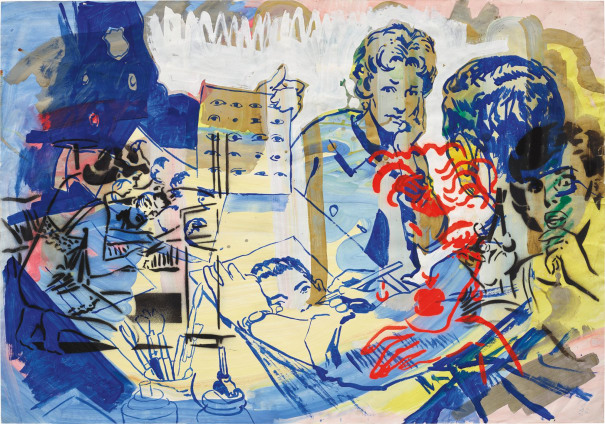Browne, Mathew. Avenior, vinyal tempera and oil on linen
—. Mal de Cou Cou, vinyal tempera and oil on linen
—. Lutalica, vinyal tempera and oil on linen
Christopher, Florentino. A Perpetual Compulsive Repetition of Words, Paint 16 March 2018
FRKO, Piccaso’s Ear Cover Art, N.D, Atlanta
Gallagher, Ellen. Double Natural, 2002
Martin, Leigh. ‘Loaded’, 2007, resin pour, Christchurch.
Nandemofoto, Koinobori. Carp Streamers. 3 May 2003, photograph, Hokkaido, Japan
Polke, Sigmar .Untitled, 1979, gouache, spray paint and pencil on paper, Germany
Reedy, Brian. Shin Godzilla, 2017, linocut, Miami
Riwai-Couch, Jared. The Marsden Korowai. 17 November 2017, New Zealand
Sanchez Santamaria. Sergio, Tattoo parlour, 2015, linocut, Mexico City
Subotzky, Mikhael. Looking at Blue, 2017, sticky-tape transfer
—. Schliemann II, 2020, sticky-tape transfer
Vea, John. Concrete is as Concrete Doesn’t, 2017, Auckland
Warlich, Cristian. The Devil Head, N.D, water colour on paper, Hamburg




























